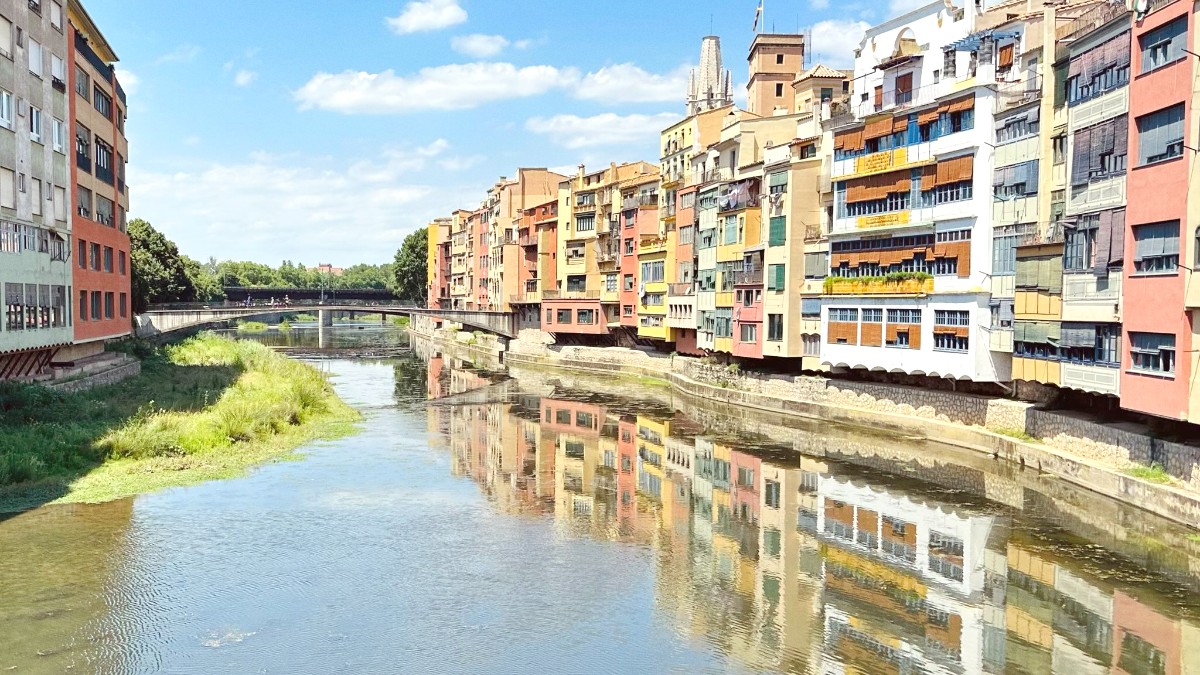
Catalonia, Spain
Girona’s cuisine emphasizes fresh, seasonal ingredients from its fertile plains, nearby coast, and mountainous regions. This focus on local produce upholds a high standard of quality and taste in every dish. Whether you seek a traditional hearty meal, a light snack, or a fine dining experience, Girona delivers memorable gastronomic adventures. Prepare to savor distinct flavors and create delicious memories during your visit.
Catalan cuisine, a core of Girona's gastronomic identity, boasts a rich history and distinct characteristics. It is a rich Mediterranean culinary tradition, shaped by its proximity to the sea (Costa Brava) and the mountains (Pyrenees). It is known for its "mar i muntanya" (sea and mountain) dishes, which blend seafood and meat.
Historically, the cuisine focuses on fresh, seasonal, and local ingredients, mirroring the region's agricultural bounty and fishing heritage. Roman and Moorish influences can be found in certain dishes and cooking techniques. Staple ingredients include olive oil, garlic, ripe tomatoes, and bread. Fresh vegetables like aubergines, peppers, artichokes, and various legumes see wide use. Distinct flavors come from "romesco" sauce, "allioli," and wild mushrooms in autumn.
Lunch (dinà or dinar) takes the main meal slot, typically from 1:30 PM to 3:30 PM. Dinner (sopar) is later, usually starting 8:30 PM and often extending to 10:00 PM or later. Many kitchens close between lunch and dinner service.
Small plates, often for snacks or shared among friends with drinks. While you can create a meal from several tapas, they are not always a full, structured meal.
Bread is often served with meals, sometimes with a small charge (pane y cubierto). Use bread to soak up sauces. Tap water is generally safe to drink, but bottled water often comes automatically unless you ask for "aigua de l'aixeta" (tap water).
Toasted bread rubbed with ripe tomato, generously drizzled with olive oil, sometimes seasoned with salt. Found everywhere, from breakfast to dinner starters.
Simple yet iconic Catalan food.
A classic Catalan dish with grilled botifarra sausage (flavorful pork sausage, often spiced with pepper) served with tender white beans. A hearty and satisfying meal.
A local favorite, especially comforting.
A traditional, rich Catalan stew, popular in winter. Made with different meats (pork, beef, chicken), various vegetables, and pasta (often large shells called "galets").
Perfect for colder days.
Catalonia has several DO (Denominación de Origen) wine regions, including Empordà, near Girona. Sample local red, white, and rosé wines. Cava, Spain's popular sparkling wine, is mainly from Catalonia.
Calçots: Grilled spring onions, a popular communal eating experience in late winter/early spring ("calçotades"), served with romesco sauce. Coca de Sant Joan: A sweet, flat bread for the feast of St. John (Sant Joan) on June 23rd.
Girona hosts El Celler de Can Roca, consistently ranking among the world's top restaurants (three Michelin stars). Reservations are a must, often months or even a year in advance.
Many options across the city, notably in Mercadal and Eixample. These offer a mix of traditional Catalan, Spanish, and sometimes international dishes.
Many tapas bars (tascas) offer affordable small plates for sampling diverse dishes. Bakeries (forns) are good for breakfast or quick lunches.
Vegetarian and vegan choices are more common, notably in larger restaurants. Many traditional dishes can be adjusted (e.g., salads, grilled vegetables). Look for restaurants that clearly mark these options.
Use apps like HappyCow to find dedicated establishments.
Awareness of gluten-free (sense gluten or sin gluten) options is improving. Larger supermarkets sell gluten-free products. When dining out, clearly inform staff of any allergies. Cross-contamination is a concern in smaller kitchens, clarify preparation.
Learning phrases like "Soy alérgico/an a..." (I am allergic to...) is very helpful.
Learn to cook Catalan dishes like paella or fideuà. Hands-on experience.
Walking tours with tastings at tapas bars, markets, and specialty food shops.
Visit vineyards or olive oil mills in the Girona province, often with tours and tastings.
Check local event listings for seasonal food festivals and events.
Use apps like HappyCow for vegetarian/vegan restaurants. Online forums and local guides can suggest specific recommendations for other dietary needs.
Check reviews for up-to-date information.
Clearly state your needs to avoid confusion.
For example, "No puedo comer gluten" (I cannot eat gluten).
For immersive food and dining experiences, consider booking through GetYourGuide. They have many options for food tours and cooking classes in the region.
Dining at local "fondas" (inns/restaurants) serves authentic Catalan fare. Numerous tapas bars provide a lively social dining experience. These truly represent local life.
Some local companies offer Catalan cooking classes, providing hands-on experience in preparing traditional dishes like paella, fideuà, or romesco sauce.
Walking tours focusing on Girona's food scene are popular. These typically include tastings at various tapas bars, market visits, and stops at specialty food shops.
In the wider Girona province, options exist to visit vineyards (Empordà DO wine region), olive oil mills, or cheese producers. Many offer tours and tastings.
El Celler de Can Roca is a prime example of culinary artistry. For an elevated experience, reserve well in advance.
Look for tasting menus and wine pairings.
Tapas bars offer a lively social dining experience. Traditional "fondas" provide authentic, hearty Catalan fare.
These settings present a true taste of local life.
From Michelin-starred to casual eateries, Girona's food scene caters to every palate.
Cuisine emphasizes fresh, seasonal, and regional ingredients for high quality.
Dining is a cultural experience, deeply tied to local customs and history.
Consider a "Menú del Día" for lunch on weekdays for a great value meal.